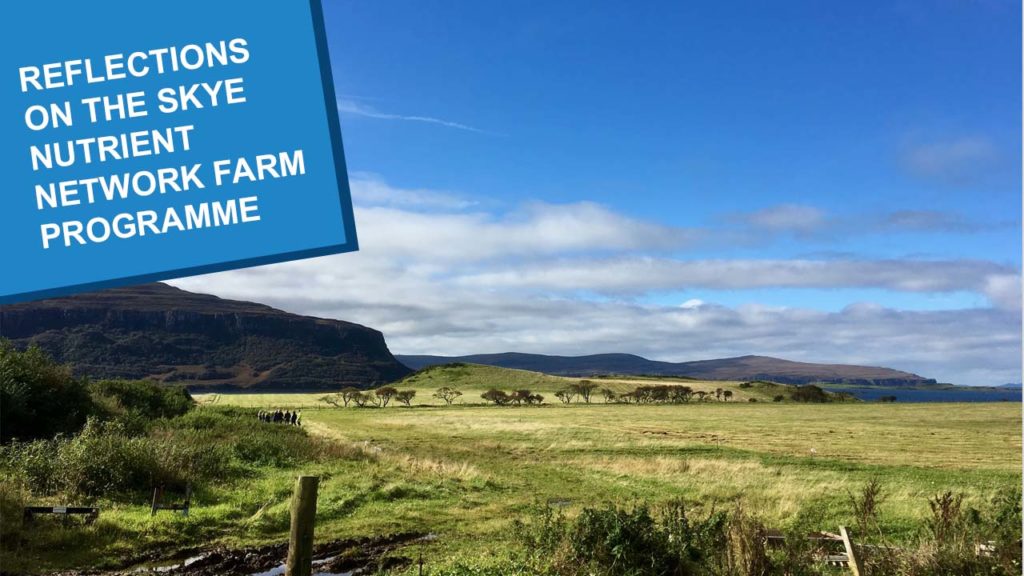Nutrient Network Farm programme case study: Waternish Farm
The Soil Nutrient Network was established in 2016 through a range of host farms across Scotland. The hosts farm would be part of a “Nutrient Network” of farms demonstrating the benefits of soil analysis, nutrient budgeting and the principles of soil management for enhancing productivity, reducing pollution and enhancing biodiversity. A series of on farm meetings were held at each farm over the two year period where external speakers and local farmers could get together to discuss how we address our soil management practices.
In 2021 we revisited 4 of the Soil Nutrient Network farmers to discuss the impact being part of the project has had on their soil management, productivity and business. We have highlighted some of the key messages the host farmers took from the Soil Nutrient Network through a series of videos and case studies.
Waternish Farm on the Isle of Skye is run by Robert and Lucy Montgomery. The Montgomery’s takes managing farm wildlife and biodiversity very seriously, combining biodiversity management with their cattle enterprise. Waternish plays host to a small herd of Aberdeen Angus cattle and a diverse mix of bird species with bird species drawn to the area because of the abundance of insect life and seeds in a biodiverse habitat. Farming practices at are Waternish are centred around encouraging high nature value areas, participating in Scottish government funded Agri-environmental schemes. From their cattle enterprise, calves are sold in September to reduce the number of cattle on the farm over winter and silage made on the farm is all cut in September to benefit corncrakes. In addition other fields are managed to benefit wading birds.
For more information about the project and host farm, Waternish Farm, click here

Sign up to the FAS newsletter
Receive updates on news, events and publications from Scotland’s Farm Advisory Service
